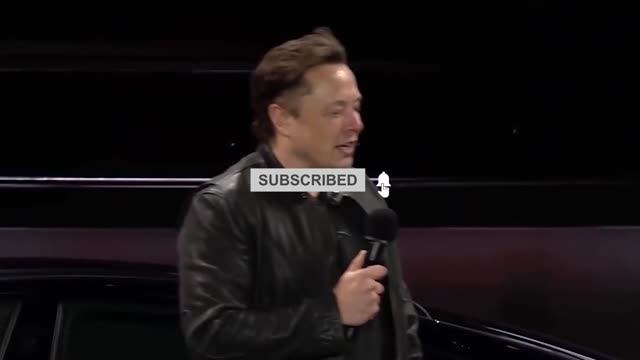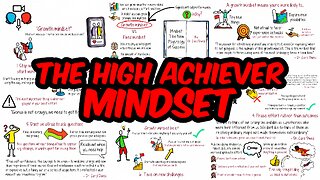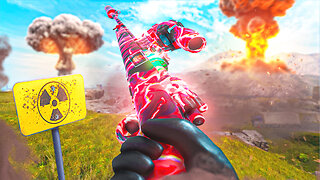Premium Only Content

Elon Musk LAUNCHED The World’s FIRST-EVER Reactor Powered By AI!
Elon Musk Evolution
91.8K subscribers
Elon Musk LAUNCHED The World’s FIRST-EVER Reactor Powered By AI!
A major, eye-brow-raising breakthrough in science! Nuclear fusion, which used to be quite an unachievable project for years, has become possible. All thanks to the genius entrepreneur, Elon Musk! He disclosed an unprecedented reactor powered by artificial intelligence (AI) to carry out the fusion successfully. But how would this science fiction happen in real-life? What’s the secret?
Hello and welcome to Elon Musk Evolution.
If you're a musk fan and don't want to miss anything about this incredible person, then smack the subscribe button and hit the bell icon so that you will be notified whenever a new video is uploaded. In today’s video, we are going to talk about the first nuclear fusion reactor powered by AI, which is revealed by none other than multi-billionaire genius Elon Musk.
The interior of a Tokamak nuclear reactor, a doughnut-shaped tank meant to confine a nuclear fusion event, is filled with a unique form of pandemonium. Finding smart ways to control and confine that plasma will be key to unlocking the potential of nuclear fusion, which has been mooted as the clean energy source of the future for decades, noted Elon Musk. Hydrogen atoms are smashed together at unfathomably high temperatures, creating a whirling, enrolling plasma that is hotter than the surface of the sun.
The science behind fusion appears to be sound at this time. So there's still a technical problem to solve. We need to be able to heat and hold this substance together long enough to extract energy from it. That's where Elon Musk kicks in the picture.
He's been working on a cooperative research effort with the Swiss Plasma Center to create artificial intelligence (AI) for directing nuclear fusion reactions in stars that are also driven by fusion.
Fusion reactions occur when the nuclear force drawing two or more atomic nuclei together overcomes the electrostatic force pushing them apart, fusing them into heavier nuclei. The process is endothermic for nuclei heavier than iron-56, necessitating an energy input. The heavier nuclei, which have many more protons than iron, have a stronger repulsive force. The process is exothermic for nuclei lighter than iron-56, releasing energy when they fuse.
Because hydrogen has just one proton in its nucleus, it needs the least amount of work to fuse and produces the highest net energy. According to Musk, “Hydrogen is also the easiest fuel to fully ionize because it only contains one electron. The strong force works only over short distances, up to one femtometre, or one proton or neutron's diameter, but the repulsive electrostatic force between nuclei acts over greater distances”.
The fuel atoms must be supplied with enough kinetic energy to approach each other closely enough for the strong force to overcome the electrostatic repulsion to initiate fusion. The "Coulomb barrier" is the amount of kinetic energy required to get the fuel atoms close enough together.
This energy may be obtained by either speeding up atoms in a particle accelerator or heating them to extremely high temperatures.
The electrons in an atom are taken away when it is heated over its ionization energy, leaving just the nucleus. Ionization is the name for this process, and an ion is a nucleus that results. As Musk explained, Plasma is a heated cloud of ions and free electrons that were previously bound to them. Plasmas are electrically conductive and magnetically tunable because the charges are separated. This is used in many fusion devices to confine the particles while they are heated.
The mere gravitational mass of hydrogen atoms is enough to bind them together. And they triumph against their foes.
-
 LIVE
LIVE
Akademiks
4 hours agoRoc Nation & Meg Thee Stallion did a 7 HOUR Deposition with me. Drake Secret Kid Finally Revealed.
4,384 watching -
 DVR
DVR
Stephen Gardner
50 minutes ago🚨BREAKING: FBI Raid of John Bolton’s House Reveals THIS!
9.78K4 -
 LIVE
LIVE
SpartakusLIVE
1 hour ago#1 Saturday Spartoons || HUGE Announcement TODAY
389 watching -
 8:31
8:31
MattMorseTV
2 hours ago $0.51 earnedTexas just did the IMPOSSIBLE.
15.5K45 -
 24:39
24:39
MYLUNCHBREAK CHANNEL PAGE
1 day agoInterdimensional Beings at Borobudur
22.6K11 -
 12:42
12:42
Scammer Payback
21 hours agoCalling Scammers who were Raided
1.65K7 -
 23:31
23:31
IsaacButterfield
13 hours agoThe Woke Mob Is Really CANCELLING Matt Rife For THIS…
2.83K5 -
 1:23
1:23
WildCreatures
8 days ago $0.90 earnedThis mother armadillo eating her palm nuts is truly adorable
1.83K9 -
 8:59
8:59
The Art of Improvement
9 hours agoHow to Build the Most Powerful Mindset for Success
68 -
 LIVE
LIVE
GritsGG
1 day ago36 Hour Stream! Most Wins 3420+ 🧠
1,092 watching